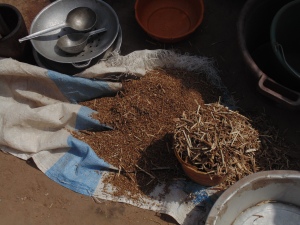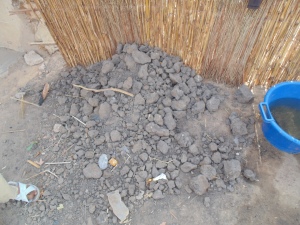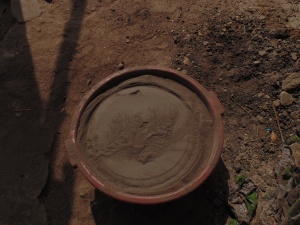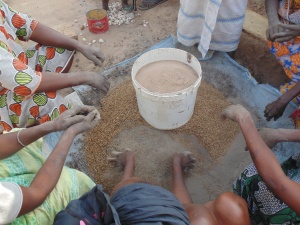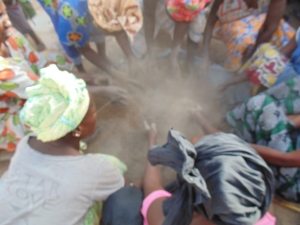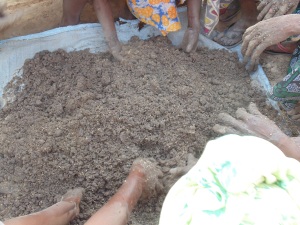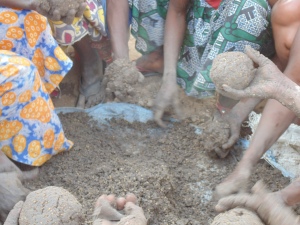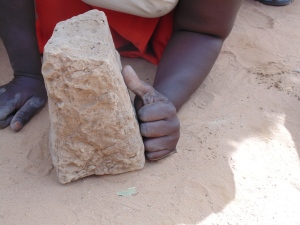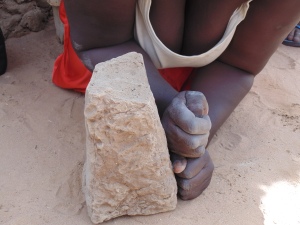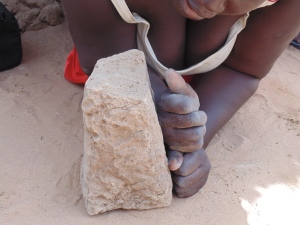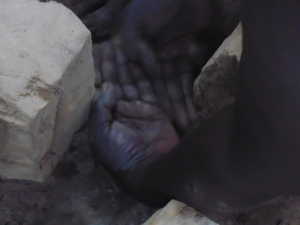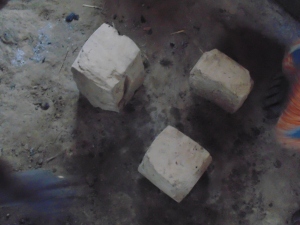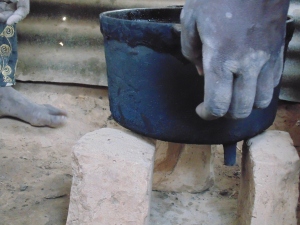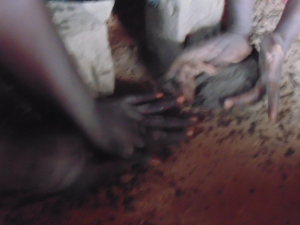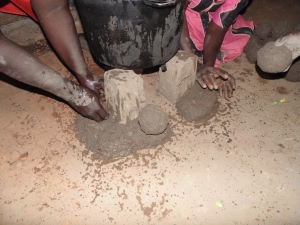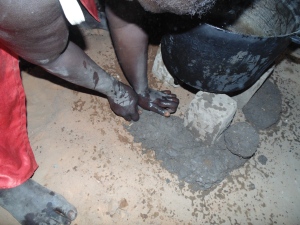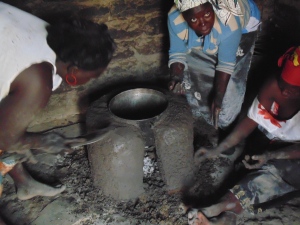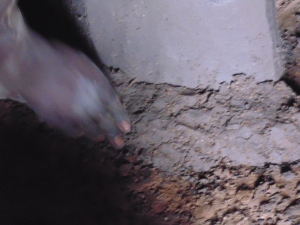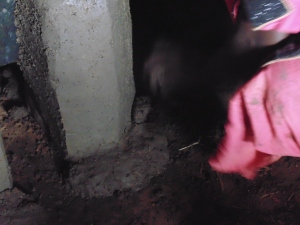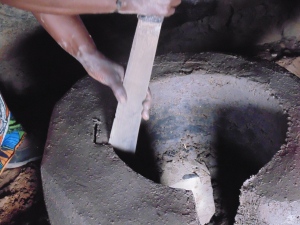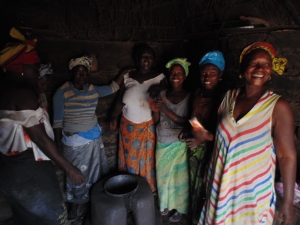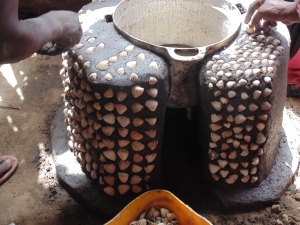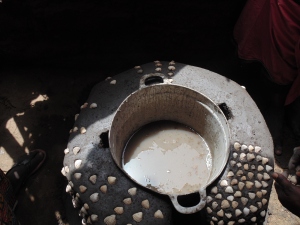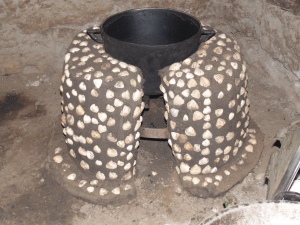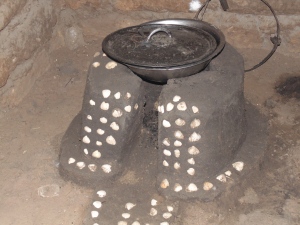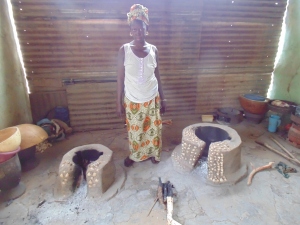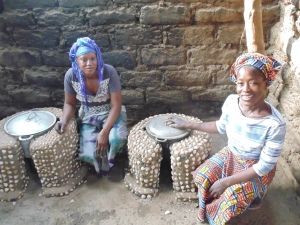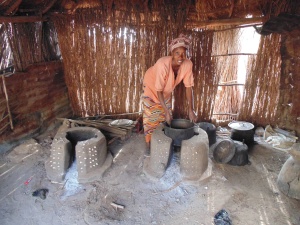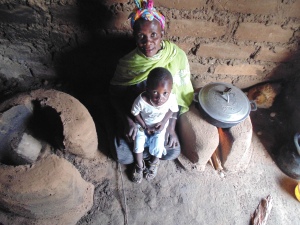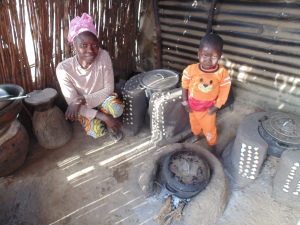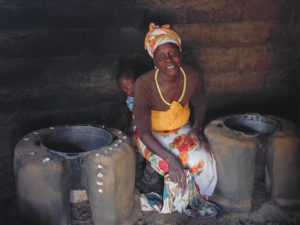Open defecation is a serious health issue in our village. It is not uncommon to go outside and find a child squatting to relieve themselves out in the open, right in the middle of compound or the street. Adults are more discreet and venture into the fields, however rarely bring soap along to properly clean themselves. Often, people will dig a shallow hole or trench for the family and put up a millet-stalk fence for privacy. This is certainly a better alternative, but since the holes aren’t deeply dug nor reinforced with cement, the holes collapse every rainy season (sometimes even before the rainy season) and with the heavy rains, follows the waste floating throughout the village. People are aware of the health implications of open defecation. They see the parasites living beneath their children’s skin from playing in the sand. They know not washing their hands afterwards is a source of their stomach aches, diarrhea, and pink eye. The omnipresent flies landing on feces and then on our food and open sores is a primary source of giardia and infection.
Latrines provide a space that is safe, sanitary, centralized, discreet, durable, and dignified for the entire family to utilize. Our vision is to have one latrine for each family compound, a total of 63 latrines, each equipped with a “tippy-tap” hand-washing station. Additionally, our village will host a series of seminars led by Peace Corps Health Volunteers about the importance of frequent and thorough hand-washing.
This was not my idea of a project for Ndorong-Sereer. Coming in as an Agroforestry Volunteer, I’ve been focused on helping protect farmers’ fields and gardens using live-fencing species, establishing cashew and mango orchards, creating community woodlots, and helping graft improved fruit varieties. This project has been entirely orchestrated by the community. The community has organized meetings to discourse at length the importance of constructing latrines and how they can improve the health of the village. Everyone agreed latrines would benefit the village and agreed to provide at least 25% of the grant total from both in-kind contributions and cash. They held more meetings to discuss advantages and disadvantages of different latrine designs. After deciding on a simple yet effective design, attractive because of its durability and efficient use of materials, the village masons stood up and voluntarily agreed to work at a reduced wage to help with construction. The men followed, willingly volunteering to dig the 2mx2mx2m pit for women-run households whose sons and husbands have left for the city. The village chief then called a meeting for the local masons and me to discuss costs and logistics of materials and transport. Here is what we determined.
Our inventory includes:
- 504 sacks of cement, each $5.31, total $2,676
- 18 large poles of #10 rebar, each $2.76, total $49.74
- 6 large pole of #8 rebar, each $2.76, total $49.74
- 63 carts of gravel, each cart $8.29, total $522.27
- 20kg of metal wire, each $1.66, total $33.20
- 5 back and forth trips to transport all materials, each $36.48, total $182.39
- 63 reduced mason wages to construct each latrine, each $16.58, total $1,044.54
As you can see, even the smallest contribution is an enormous help. Just $2.00 can fund more than a kilo of metal wire for a latrine. A mason’s wage for one latrine is covered with $20.00. You can sponsor a latrine for an entire family for only $81.91. We need your support to raise $4,095 to help fund our vision of providing a latrine for every compound. The community has invested $1,065 in cash and is very enthusiastic and eager to begin construction. We are grateful for any amount you have to offer, please help contribute to improving the health of our village!
You can Donate Here!
